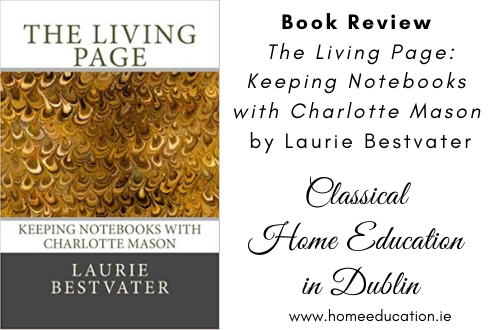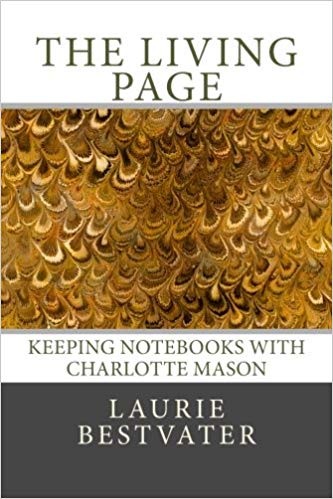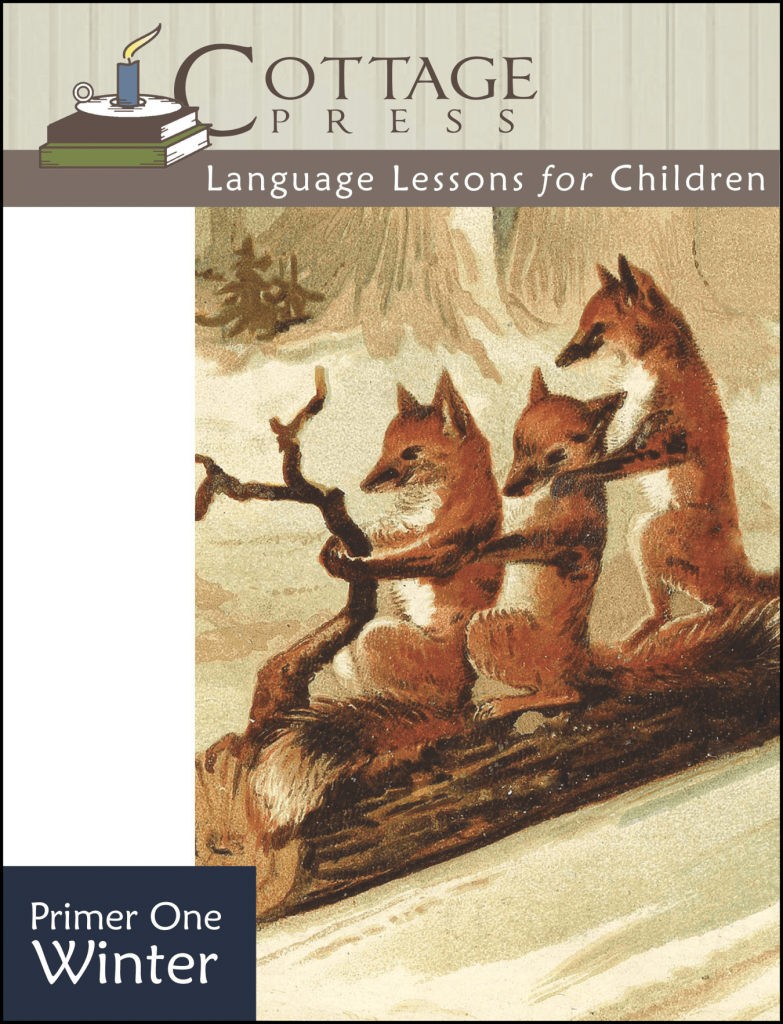Book Review of ‘The Living Page: Keeping Notebooks with Charlotte Mason’ by Laurie Bestvater

When I say that we use a Classical Charlotte Mason style in our home, people think worksheets and workbooks. Actually a true Charlotte Mason style involves lots of reading of living books and creating notebooks.
But the first blank page of a blank notebook can sometimes be daunting. Discussions of implementing a Charlotte Mason style talk about many different notebooks – a Book of Centuries (a timeline book), a Nature Journal, a Common Place, a Reading Journal, a Book of Firsts, Word Books and others. Many questions spring to mind: How do I create each? How do they differ? What do they look like for different ages? Might I combine some? How might that look?
I often saw the book ‘The Living Page: Keeping Notebooks with Charlotte Mason’ by Laurie Bestvater (Amazon UK, Book Depo) recommended, so when I was battling with trying to understand the Book of Centuries, I finally bought it on a whim earlier this year.

It was so easy to read, so informative and interesting. The author is so inspiring. Her delight and energy bubble over as I read it. It is an easy read. I reread it, skipping the last chapter on my reread. I underlined, turned pages, flicked back and forth, and wished I had bought it earlier! She talks both of notebooks for children and for a mother’s own education. I was inspired not only to start the Book of Centuries I had wanted, but also a Common Place and a Reading Journal for myself, as well as to create my own Nature Journal alongside my children, rather than just encouraging them to make theirs. It is helpful for me to have the guidance of this book getting started. We can make these notebooks on our own, each incorporating our own style as we get comfortable, but its nice to have ideas and thoughts on how to start, and this book was written for this need. There are many blog posts on this topic, but this book is so well written, and illustrated, it made the concepts flow. She talks about both how and why; And being a book, has space to go into both in detail. Describing the why of a Common Place book:
“A Commonplace book is also an aid to self-education and memory. Keeping one forces you to become an active reader, to read with one eye towards the main points of an argument, the beautiful quote, the insight that gives you pause. You become aware of more than just the words on the page; you become aware of the author’s arguments, his writing style, and what you think about what the author is saying. It creates a give-and-take between writer and reader. Furthermore, the act of writing down quotations and arguments fixes them more firmly in the memory, making it more likely that you’ll remember them at appropriate times. Periodically re-reading your Commonplace book will further strengthen your recall even more.”
I thought the last chapter, which was more generally about the Charlotte Mason approach, was waffly and off topic from the title, and there are lots of pages of references that were easily ignored, but the main content was really good. As would be expected from a book written about notebooking, Laurie includes lovely quotes.
“I am not a teacher but an awakener.” – Robert Frost
“To arouse wonder and admiration must be one of the teacher’s principal aims.” – Essex Cholmondley

Over the summer I bought some nice A4 blank notebooks with thick paper in our local Euro shop for €3 each and in September we got started with our Nature Journals for all of us. I had already started my Book of Centuries for me shortly after purchasing Laurie’s book. (We have had a wall timeline for nearly 2 years now which is added to every week.) My daughter’s Language Arts (i.e. English) curriculum from Cottage Press is ‘Charlotte Mason Inspired’ so includes copywork of beautiful poems and passages, narration through illustration of famous tales, drawings with notes for nature study and a choice of pasting in the works for art appreciation. I chose to use a Handwriting Without Tears lined notebook so she has the guides she needs for neat copywork. Pictures are pasted in, so her composition book lends itself to becoming a Common Place notebook for her – in keeping with the concept, if not to the letter, in Leslie’s book. This book is one she can enjoy paging back through, becoming a lovely scrapbook of her learning.
I imagine that journalling and notebooking are not specific to any particular style of home education, and the specific notebooks described could be incorporated into or added to other methods.
“One thing at any rate we know with certainty, that no teaching, no information becomes knowledge to any of us until the individual mind has acted upon it, translated it, transformed, absorbed it, …. self-education is the only possible education” – Charlotte Mason



